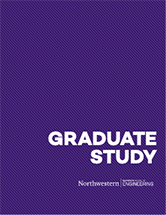Taking Flight Autonomously
Aditya Nair (MSR ‘24) applied lessons learned in MSR to take an inexpensive bird-like drone and teach it to fly.
The same pursuit that enthralled the Wright Brothers at the dawn of the 20th century inspired Aditya Nair (MSR ‘24) more than 120 years later.
Flight.
For Nair's final project in Northwestern Engineering's Master of Science in Robotics (MSR) program, he took a relatively inexpensive, propellerless drone he bought online that resembled a bird and taught it how to fly autonomously.
“If you look at an actual bird, it learns to fly by itself, but it has to learn on the first try. If it doesn't, it's going to die,” Nair said. “The idea of my project was to get this cheap toy bird to fly with very limited data, like an actual bird.”
Training a machine learning (ML) algorithm using a trove of data can create a highly polished robot that performs brilliantly. But Nair wondered if he could do something similar with limited data, like what a baby bird has available to them when learning to fly.
To accomplish the task, Nair modified the bird so it could essentially see its surroundings. He hacked into the drone and made adjustments with a readily available and commonly used developers’ kit called Arduino, which, just like the bird drone, can be purchased online for less than $50.
With three weeks left in the 10-week project, Nair accomplished his goal: His bird could fly as intended thanks to intelligent control algorithms and motion tracking.

“We anticipated that we might run through a lot of birds, so we bought 10 before we began the project,” he said. “But only one needed to be used. That was exciting.”
It wasn’t the only exciting experience Nair had during his MSR journey. His summer internship allowed him to put initial MSR learnings into action and fed his love of robotics.
Nair served as a software engineer intern for HEBI Robotics, a Pittsburgh-based company that develops advanced robotics components and systems.
Nair used HEBI components as a student at the National University of Singapore. He reached out to the company’s leadership to offer his services as a master’s-level intern. That outreach led to a 10-minute conversation with the company's chief technology officer and head software engineer.
“It went incredibly well,” Nair said. “The positive vibe I got from them in those 10 minutes was the most crucial in making me excited for the summer.”
And the summer didn’t disappoint.
Nair joined HEBI’s small-but-agile software team to help the company’s robot actuators learn from demo scripts that drive down the need for complicated code while rapidly increasing the robot’s capabilities.
“My job was mainly to create and improve these demo scripts for robot arms as a part of their APIs in C++, Python, ROS2, C, Java, and MATLAB,” he said. “In doing so, I also found and fixed numerous bugs throughout the APIs that accumulated over years of development.”
So successful was his work that the company’s marketing team compiled a video to demonstrate the accomplishments. In the video, Nair’s work shines through as he helps a robot arm learn how to stack wine glasses, pour drinks, and hold a glass without spilling its contents despite rapid, chaotic movement.
It was an experience he could not have had without the opportunities MSR presented to him.
“The positive experience I had in MSR has made me more confident and qualified,” he said. “If your goal is to learn how to be a good robotics professional, this is the program for you.

